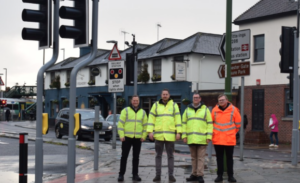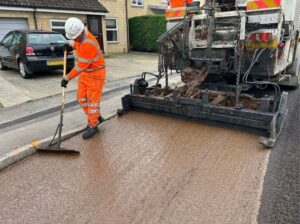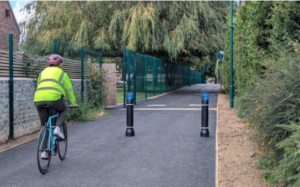Almost 40,000 safety related defects on highways across West Sussex have been repaired in the last six months as the county council retains its commitment to better roads.
This year the council invested an extra £13 million to actively tackle the problem of our deteriorating roads and keep the county moving. This was in addition to the base budget for the year of £42.8 million and £2.1 million received from the Department for Transport’s Road Resurfacing Fund.
And, according to the council, the investment is paying off.
Between April and September this year, our Highways Team worked hard on surface treatments and patching, and repairing safety defects across the network. This includes completing:
- More than 95% of pothole repairs – around 18,000 were completed using the ‘sides sawn and sealed’ method
- 9,600 pothole repairs covering approximately 10,500sqm using the Velocity jet patchers
- 23,625 sqm worth of small and medium scale patching across 299 jobs
- 4.2 miles (6.9Km) of large-scale carriageway patching
- 116 miles (187Km) of surfacing treatments
To help keep the roads open, we maintained our efforts to ensure the repair techniques we use are long-lasting and cost effective. As part of this, we have completed 3,000 sqm of durable, highly waterproof repairs during a three-month trial of using mastic asphalt to repair potholes on stretches of road that undergo the most stress, such as junctions.
Councillor Joy Dennis, Cabinet Member for Highways and Transport said: “Over the last six months our teams have clearly demonstrated our ongoing commitment to better roads, improving our highways and keeping the network open for all users. This work underscores the priority in Our Council Plan for a sustainable and prosperous economy for West Sussex. It is an ongoing commitment for the council, and I know our teams will proudly continue their efforts through the winter months and beyond.
“As a county, we have here in West Sussex one of the most extensive highways networks to monitor and maintain, with over 2,500 miles, or around 4,000km, of roads. This is roughly the same as driving from Chichester to Rome and back.
“To get our entire network into perfect condition, we would need £400 million for the surfacing works alone. We’d also need to carry out a large amount of other structural and drainage works, especially on rural roads, which don’t have the same underlying infrastructure as roads in urban situations do.
“And our challenge doesn’t stop there. We have had two consecutive winters with extreme weather, from low temperatures to record rainfall, that has disrupted and damaged our roads. This year, we are investing a further £1.5million for much-needed resources to continue maintenance work and provide resilience in responding to emergencies.”
Ahead of the coming winter months, the council is increasing work to clear drainage systems and ensure water can run off the roads as effectively as possible should there be more heavy rain, providing extra resources to clear more gullies, ditches and areas where leaves build up.
So far this year, the council has carried out more than 43,000 drainage gully cleanses, brought in extra CCTV resource to monitor and identify issues, and provided an additional jetting unit to clear flooded areas and get them moving as soon as possible.
West Sussex County Council’s Highways Team will continue this work over the coming months and is calling on road users to them keep the network open by continuing to report any issues you encounter using its online reporting tool.






















